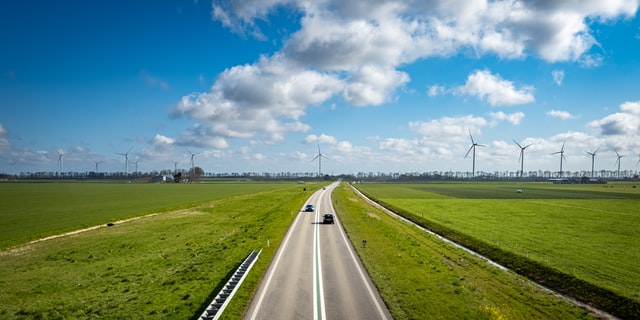
Upward trajectory confirms the sector’s consistency in generating socio-economic gains, even during a pandemic.
Renewables fared better than conventional energy during the COVID-19 pandemic. Employment in 2020 was shaped first by delays and later by surges in activity.
Solar photovoltaic (PV) remains a market leader, emplying 4 million workers or 36% of the workforce worldwide.
Biofuels jobs fell slightly from 2.5 million to 2.4 million, with highest employment in Brazil, Indonesia, and the United States.
Total employment in the wind power industry increased from 1.17 to 1.25 million globally, with China alone accounting for 44% of the global total.
Market leaders retain their positions
The COVID-19 impacts were uneven among individual countries technologies and segments of the value chain.
China retains the country’s status as the biggest employer. Brazil remains the word’s biggest biofuels employer, followed by Indonesia and the United States.
Job opportunities grow as the energy transition picks up speed
At present, an array of proven and maturing technologies – principally wind, solar, and bioenergy – dominate the employment picture. As the energy transition picks up speed, the demand for new technologies such as battery storage and green hydrogen is increasing.
The global capacity to manufacture lithium-ion battery cells for automotive and stationary storage purposes grew seven-fold in the decade to 2020 and could create 10 million jobs by 2030.
As countries start supporting the growth of green hydrogen markets, an increase of about 2 million jobs in the sector is expected from 2030 to 2050.
Employment trands are shaped by a multitude of factors
A key factor in shaping employment is the rate at which renewable energy equipment is manufactured, installed and put to use. During the pandemic, renewable energy fared well compared with conventional energy.
With declining costs and relatively steady annual investments, more than 260 gigawatts (GW) of renewables were installed during 2020, expanding cumulative capacity by about 10%. Solar and wind power fared exceptionally well, accounting for a combined 238 GW of total additions in 2020.
Pandemic highlights the importance of a domestic value chain
In a time when mobility constraints disrupt cross-border supply, the value of strong domestic value chains rises.
Supporting policies that ensure the availability of materials and equipment, quality assurance, and skills along the chain will strengthen localised or regional renewables-based industry.
The Leveraging Local Capacity series assesses the skills requirement along the value chain of different renewables technologies, and identifies areas with the greatest potential for local jobs creation.
The energy transition creates opportunities for people with a range of skills and educational levels
Training the future workforce requires time and is therefore one of the most immediate steps in pursuing the energy transition.
Examining needed jobs by education level in the energy sector shows that under a Paris-compliant 1.5 °C scenario half of the 122 million jobs created by 2050 will require a primary or lower secondary education, 37% a secondary education. The remaining 13% of jobs will require a tertiary education at the bachelor’s, master’s or doctoral level.
In addition, many of the skills required for work in the fossil fuel sector are relevant and in principle transferable to the renewable energy sector.
Therefore, skills delivery can take place in a variety of ways.
A just and inclusive energy transition is the only way
Women account for one-third of the global renewables workforce, but their participation varies widely amond countries and industries.
COVID-19 pandemic affected women, who tend to work in sectors more vulnerable to economic shocks more than men. The 32% average women’s share in overall renewables jobs is still substantially higher compared to average 21% share in fossil fuels.
A just and inclusive transition must be geared towards adequate and equal opportunities for women, youth, minorities and marginalised groups. Policy frameworks must support decent wages, safe workplaces, and workers’ rights.
2021 marks the beginning of the decade of action for policy making
In this defining moment in history, governments must bring commitments to implementations.
A holistic approach to policy making that focuses not only on policies and programmes in the energy sector itself but builds on a sophisticated understanding of the close inter-connections between energy, the economy at large, and social and planetary sustainability is required.
This implies a need for renewable energy policies that are linked to structural change and the assurance of a just transition – all within a holistic global policy framework.
Sustainability, employment and social justice must be pursued in tandem, rather than seen as competing demands. Just and fair ourcomes will raise the level of popular acceptance of the energy transition.
Source: International Renewable Energy Agency (IRENA), October 2021

